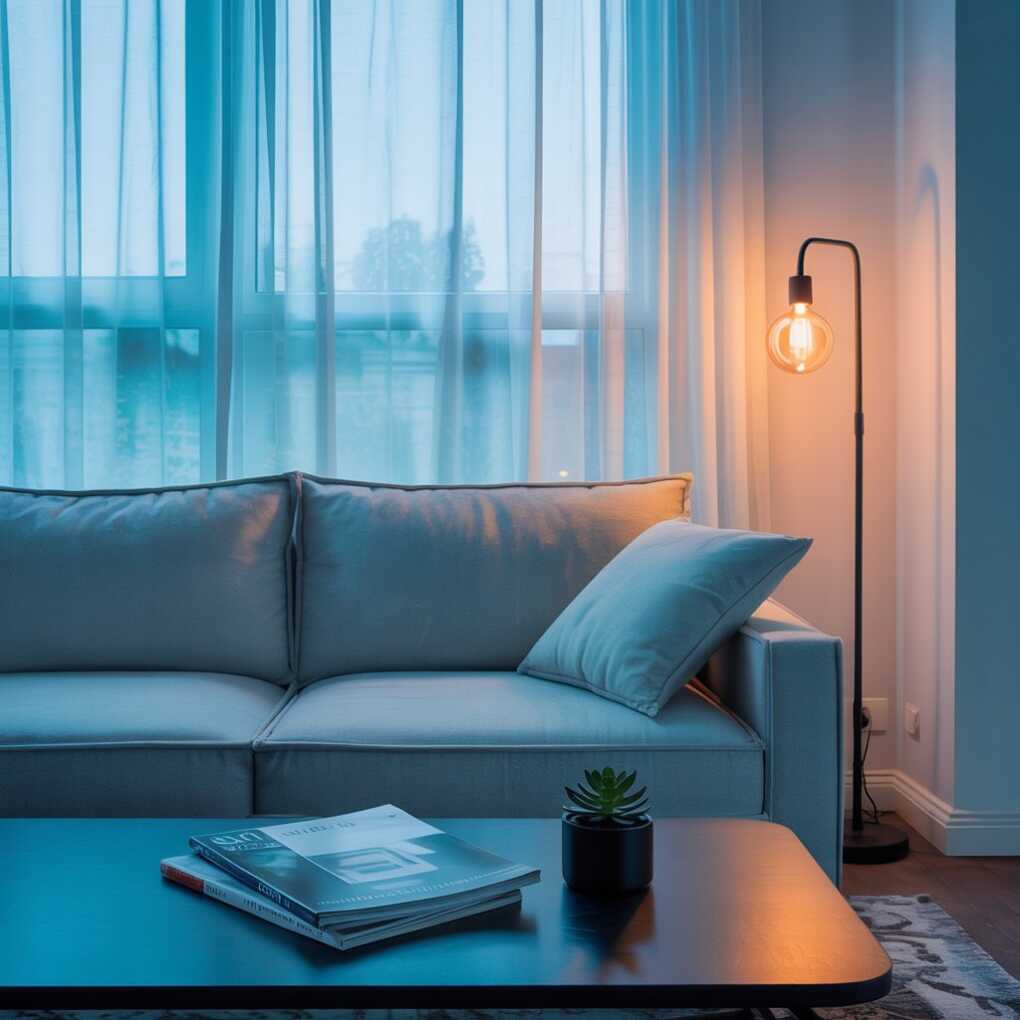Creating the right mood at home isn’t just about furniture or colour schemes — it’s about how every design choice comes together to shape your space’s atmosphere. From lighting to layout, even the smallest touches can influence how you feel when you walk into a room.
Whether you’re aiming for a calm and cosy retreat or a vibrant and energising space, your home should reflect the emotional tone you want to live in. This goes beyond aesthetic appeal — it’s about function, comfort, and flow working together seamlessly.
In this guide, we’ll take you through a step-by-step checklist to help you master your home’s mood through thoughtful and smart design choices — from how you control natural light with the right window treatments to selecting layered lighting that enhances both form and feeling.

1. Let Natural Light Guide the Mood
One of the most effective ways to shape the mood of a room is by understanding and working with natural light. As light changes throughout the day, your window treatments play a vital role in enhancing or softening that effect. Roman blinds are an excellent choice for adding elegance and warmth — they gently diffuse sunlight and offer a tailored finish that suits both classic and modern interiors.
Opt for shutters in living areas or bedrooms to add timeless character while giving you full control over privacy and brightness. In more flexible spaces like kitchens or home offices, dual blinds or day/night blinds let you shift the mood with ease. Combining sheer curtains with blackout options allows you to create different lighting atmospheres as needed.
When your window coverings work with your light sources, not against them, you gain subtle yet powerful control over your room’s tone.
2. Layer Your Lighting Like a Pro
Lighting is one of the most overlooked tools when designing for mood. Instead of relying solely on overhead lights, aim to layer your lighting using ambient, task, and accent sources.
- Ambient lighting sets the overall tone — think ceiling fixtures or wall-mounted fittings.
- Task lighting focuses on practical areas, like reading corners or kitchen counters.
- Accent lighting is your design flair — use it to highlight artwork, architectural features, or stunning elements like glass staircase pendants, which not only illuminate but add visual drama.
Consider installing dimmer switches and warm LED bulbs to fine-tune your space as the day progresses. A warm glow in the evening instantly invites relaxation, while cooler light in the morning helps wake up the senses.
3. Optimise Temperature and Air Quality Control
Your environment’s comfort level is closely tied to temperature and air quality — and smart systems can make a world of difference. With smart thermostats, you can automatically regulate the temperature based on time of day or occupancy, keeping the space feeling just right without manual intervention.
Go a step further by integrating smart air purifiers or humidity monitors that adjust airflow and filtration in real time. Not only do they help maintain physical comfort, but they also support wellbeing, reduce allergens, and promote a healthier, more uplifting atmosphere.
4. Set the Tone with Multi-Room Audio
Sound plays a powerful role in shaping the emotional energy of a home. With multi-room audio systems, you can set a consistent tone throughout your space — whether it’s calming background music during dinner, energising playlists in the morning, or white noise for focused work.
Smart speakers and wireless audio hubs allow you to control soundscapes in every room, individually or all at once. Create mood-based presets like “Relax,” “Entertain,” or “Focus,” and change the vibe instantly with a voice command or app tap.
5. Mood-Enhancing Solutions for the Kitchen
The kitchen is no longer just a functional space — it’s an emotional hub of the home. Integrating mood-focused smart solutions like self-closing drawers, sensor-activated taps, or voice-assisted recipe readers helps reduce stress and create a more fluid experience.
Consider installing smart displays that can show calming visuals, meal plans, or ambient nature scenes while you cook. Even simple additions like under-cabinet motion lighting and app-controlled aroma diffusers can help make cooking feel less like a chore and more like a mindful ritual.
6. Introduce Smart Appliances That Work With You
Today’s smart appliances do more than automate chores — they adapt to your routines and support your lifestyle. From washing machines that optimise cycle times to fridges that remind you when food is expiring, these innovations reduce cognitive load and free up mental space.
What does that have to do with mood? Everything. A calm, well-managed household gives you the headspace to enjoy your surroundings, focus on what matters, and experience a more peaceful home environment.
7. Reinforce Comfort with Smart Security and Safety
Peace of mind is a powerful mood-setter. By integrating smart home security systems — including doorbell cameras, motion sensors, and app-connected locks — you can create a safe, secure environment that helps you truly relax.
Automated alerts, remote monitoring, and entry logs mean you’re always in control, whether you’re home or away. Combine with smart smoke detectors and leak sensors to stay ahead of unexpected risks and maintain a calm, confident living space.
Final Thought
Mastering the mood of your home isn’t just about aesthetics — it’s about designing with intention, emotion, and intelligence. When smart technology and thoughtful design come together, you create a space that adapts to your lifestyle, supports your wellbeing, and elevates your everyday moments.
Let your home do more than look good — let it feel good, too.
